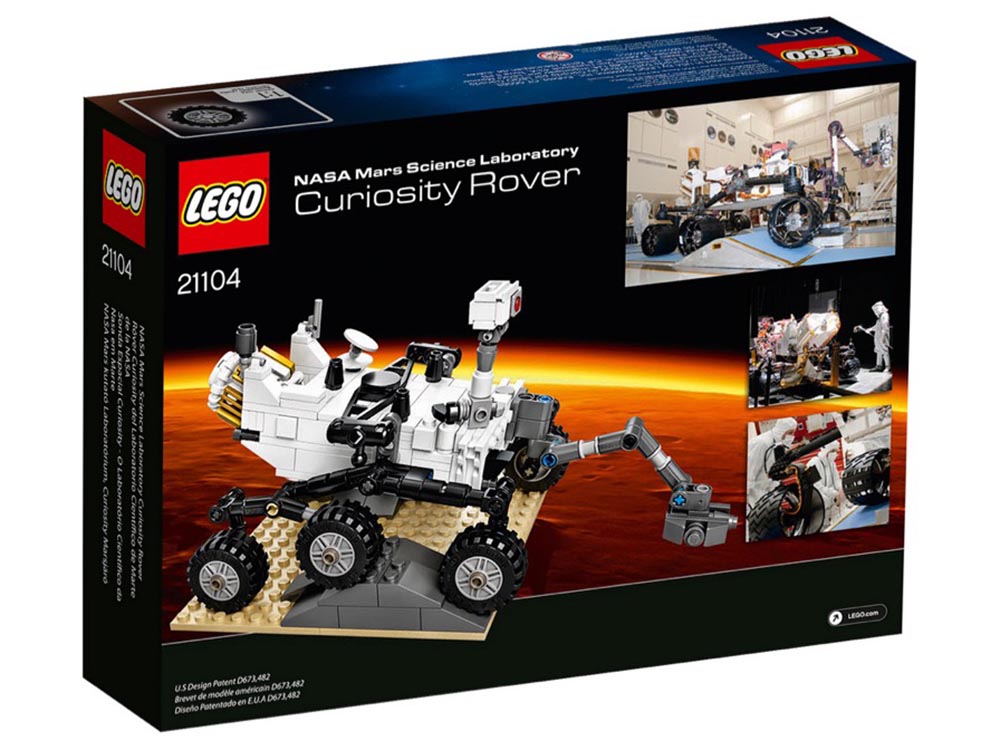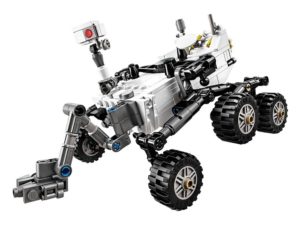Mission to Mars: Curiosity Rover
In 1965, the world eagerly awaited the results of the first spacecraft flyby of Mars. Before then, everything we knew about the Red Planet was based only on what could be seen from telescopes on Earth. Any hopes of finding Martians, or even a hospitable planet, were quickly dashed as Mars appeared to be an arid, cold, and lifeless planet.
It would take almost 50 years and a series of successful space missions to give us a better understanding of this apparently barren planet.
Not only is Mars home to the largest volcano and the deepest canyon in the solar system, but many of its features appear to be shaped by water, which may, even today, occasionally emerge from below the hostile surface. Water is key to life as we know it, and is one sign that Mars could be a habitat for past or present microbial life…or even human life someday in the future.
This is why Mars continues to intrigue scientists, and why NASA (National Aeronautics and Space Administration) persists in attempting to unlock the secrets of the Red Planet.
Follow the Water
NASA’s interest in the Red Planet began soon after it was established in 1958. The very first mission, Mariner 4 (1965), simply flew by Mars, taking as many pictures as possible on its way past. As knowledge and technologies grew, NASA started putting spacecraft in orbit around the planet for longterm global studies. Then, with even more capabilities, NASA spacecraft began to land on the surface, beginning with Viking 1 & 2 (1976). With rovers such as Sojourner (1997), Spirit and Opportunity (2004), and Curiosity (2012), real treks across the planet’s surface became possible.
For earlier missions, understanding Mars as a potential habitat for microbial life began with a strategy of “follow the water.” Orbiters, landers, and rovers provided numerous signs of past or present water on Mars. Mars Science Laboratory, with its rover Curiosity, is the latest and most ambitious mission in NASA’s Mars Exploration Program. It takes a leap forward in beginning NASA’s current Mars exploration strategy: “Seek Signs of Life.” In the first year of its mission, Curiosity discovered that Gale Crater once had the right conditions to provide a habitat for microbial life, including the past presence of long-term surface water and at least six key chemical elements that are fundamental chemical building blocks of life.
Curiosity is the most advanced rover ever developed for the Mars program and carries ten times more scientific gear than the earlier Mars rovers. It’s about the size of a car, but not quite as fast, with a top speed of only 1.5 inches per second on flat, hard ground. It has six-wheel drive combined with a rockerbogie suspension system and cameras mounted on a mast to help the mission’s team on Earth select exploration targets and driving routes.
The Mars Rover car Built as a mobile science laboratory, Curiosity is packed with special instruments and cameras for performing a wide range of climatic and geological studies. This includes the ability to gather samples of rocks and soil and analyze them directly in a series of onboard test chambers. With selected instruments being provided by Russia, Canada, and Spain, this latest mission to Mars has a truly international flavor.
With its sophisticated mobility system and scientific tools, Curiosity’s ultimate destination is layered terrain on the slopes of Mount Sharp at the center of Gale Crater. By exploring these layers, each of which records a specific time in Mars’s history, Curiosity will likely uncover the secrets of the Red Planet for many years to come.
| Lego Home | Minifigures | Lego Ideas |
[ebayfeedsforwordpress feed=”https://www.auctionrequest.com/arfeed.php?uid=tan5efcba82ad1b&keyword=lego&categoryId1=220&sortOrder=BestMatch&programid=1&campaignid=5338239407&toolid=10039&listingType1=All&feedType=rss&lgeo=1″ items=”5″]


